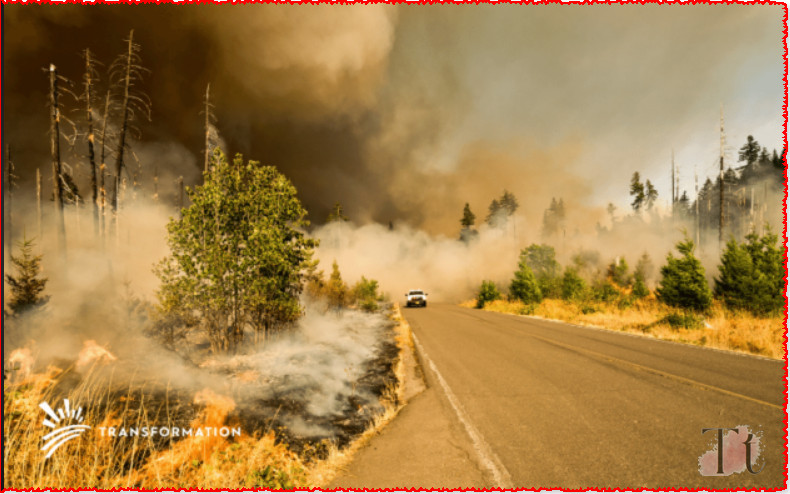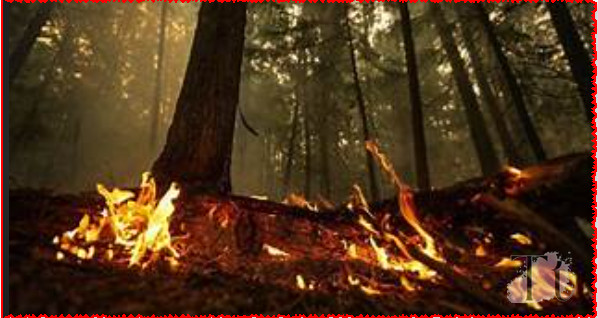The recent reports of wildfires near Flin Flon, Manitoba, have drawn attention to the urgent need for effective wildfire management and public safety measures in the face of increasingly severe climate conditions. These incidents highlight the complex interplay between environmental factors, human activity, and emergency response efforts in mitigating the impact of

Table of Contents
The recent reports of wildfires near Flin Flon, Manitoba, have drawn attention to the urgent need for effective wildfire management and public safety measures in the face of increasingly severe climate conditions. These incidents highlight the complex interplay between environmental factors, human activity, and emergency response efforts in mitigating the impact of on communities and ecosystems.
The wildfires, sparked by drought conditions and exacerbated by high winds, have posed significant threats to both property and human lives. The evacuation orders issued for homes and cottages north of Flin Flon underscore the immediate danger posed by the rapidly spreading fires, prompting authorities to prioritize the safety and well-being of residents in the affected areas. The substantial growth of the fires, spanning over 3,000 hectares, further underscores the challenges faced by firefighting crews in containing and extinguishing the blaze.
In response to the escalating situation, emergency measures have been implemented to address the wildfires and protect vulnerable communities. Firefighting crews are deploying various strategies, including setting up sprinklers around structures and establishing fire breaks, to prevent the further spread of the fires and safeguard critical infrastructure. The collaboration between provincial agencies and interprovincial support from neighboring jurisdictions, such as Ontario and Saskatchewan, demonstrates the collective effort to bolster firefighting capabilities and resources in combating the wildfires effectively.
The evacuation of Cranberry Portage, a northern Manitoba community, highlights the widespread impact of the Wildland fire on local populations and the necessity of coordinated evacuation procedures. Approximately 700 individuals were forced to leave their homes due to the advancing fires, necessitating swift evacuation measures to ensure the safety and welfare of residents. The closure of Highway 10 between Cranberry Portage and Sherridon Access Rd. underscores the disruption caused by the wildfires to transportation routes and the importance of maintaining road safety amid hazardous conditions.
The influx of evacuees to The Pas underscores the need for adequate emergency shelters and support services to accommodate displaced individuals and families. The mobilization of multiple buses for transportation reflects the logistical challenges involved in managing large-scale evacuations and facilitating the movement of evacuees to designated safe locations. The collaborative efforts of emergency management agencies, local authorities, and community volunteers are essential in providing essential assistance and resources to those affected by the wildfires.
The underlying factors contributing to the prevalence of Wildland fire in northern Manitoba, including drought conditions and environmental vulnerabilities, underscore the need for proactive measures to mitigate the risk of future incidents. Public awareness campaigns emphasizing fire prevention strategies, such as responsible campfire practices and adherence to burning permit regulations, play a crucial role in reducing the likelihood of human-caused wildfires and promoting community resilience. Additionally, investments in wildfire management infrastructure, such as firefighting equipment and aerial surveillance capabilities, are essential for enhancing emergency response capabilities and minimizing the impact of wildfires on ecosystems and communities.
In conclusion, the recent wildfires near Flin Flon, Manitoba, underscore the pressing need for comprehensive wildfire management strategies and coordinated emergency response efforts to address the growing threat of wildfires in the face of changing environmental conditions. By prioritizing public safety, community resilience, and proactive mitigation measures, stakeholders can work together to mitigate the impact of wildfires and safeguard the well-being of affected communities in northern Manitoba and beyond.

Wildfire Crisis Management and Evacuation Protocols
The emergency evacuation in Sourdough Bay, prompted by the rapid spread of the WE010 forest fire near Flin Flon, is a stark reminder of the challenges posed by Wildland fire in Manitoba. Wildfires are a recurring threat in regions prone to dry and windy conditions, and the situation in Sourdough Bay underscores the critical need for proactive wildfire management strategies and effective emergency response measures. As the fire expanded to approximately 20 hectares by May 10, immediate evacuation orders were issued for residents in the cabin area, emphasizing the urgency of the situation and the need to prioritize public safety.
The response to the Wildland fire crisis involved coordinated efforts from various agencies and authorities, including Manitoba Natural Resources and Northern Development, fire crews, law enforcement, and environmental agencies. These stakeholders worked together to combat the blaze and contain its spread, with a focus on safeguarding affected communities and minimizing property damage. Despite the fire’s proximity to power lines and residential areas, the absence of casualties or property damage highlights the effectiveness of emergency response measures in mitigating immediate risks and protecting lives.
Regional Assessment and Proactive Measures
The regional assessment of Firestorm, including the WE010 fire, highlights the broader challenges posed by escalating fire danger levels across the region. Municipalities such as Flin Flon, Creighton, and Denare Beach implemented fire bans to mitigate the potential spread of wildfires and protect vulnerable communities. Environmental agencies closely monitored smoke plumes and air quality impacts, issuing special advisories to residents to minimize health risks associated with wildfire smoke exposure, emphasizing the importance of public health and well-being in emergency response efforts.
Interagency collaboration and support played a pivotal role in addressing the wildfire crisis, with provincial authorities issuing evacuation orders and mobilizing resources to combat the blaze. The deployment of interprovincial support from Ontario and Saskatchewan, alongside collaborative efforts between firefighting agencies, law enforcement, and conservation officers, facilitated coordinated response actions and enhanced firefighting capabilities. Public safety measures and preparedness initiatives, including public awareness campaigns and ongoing communication from authorities, helped inform residents about evacuation procedures and potential risks associated with the Wildland fire, fostering community resilience and preparedness in the face of evolving wildfire dynamics.

Interagency Collaboration and Community Resilience
The evacuation dynamics in Cranberry Portage underscored the widespread impact of the Firestorm on local populations, with approximately 600 residents ordered to leave the area amidst escalating fire threats. Highway closures and evacuation orders disrupted transportation routes, necessitating swift evacuation and emergency management measures to ensure the safety and welfare of affected individuals and families.
Continued monitoring of fire behavior and weather conditions informed future contingency planning and adaptive response strategies, with stakeholders emphasizing the importance of community resilience and preparedness to mitigate future Firestorm risks and enhance emergency response capabilities. In conclusion, the emergency evacuation in Sourdough Bay highlights the urgent need for proactive wildfire management and interagency collaboration to mitigate risks and safeguard communities in the face of escalating Wildland fire activity. By prioritizing public safety measures, environmental stewardship, and effective emergency response, stakeholders can navigate the challenges posed by Firestorm and foster community resilience in the face of evolving Wildland firedynamics, ensuring the well-being and security of residents across Manitoba.
Government of Canada Addresses 2024 Wildfire Season Preparedness
In a recent announcement from Ottawa, the Government of Canada shared updates regarding the upcoming Wildland fire season and measures being taken to prepare for potential risks. The focus is on ensuring Canadians are informed about the impacts of climate change, particularly on the increasing threat of Wildland fire.
Minister Harjit S. Sajjan, along with other government officials, highlighted concerns about the 2024 wildfire season. Meteorologists predict weather conditions conducive to wildfires due to warmer and drier spring conditions, worsened by El Niño. This situation calls for heightened vigilance and preparedness.
To address the challenges posed by Wildland fire, the government is implementing the Humanitarian Workforce Program (HWF). This initiative aims to enhance response capabilities by working with non-governmental organizations (NGOs) like the Canadian Red Cross and St. John Ambulance. The focus will be on supporting at-risk communities, starting with British Columbia and the Northwest Territories.
Furthermore, the government announced plans to include Team Rubicon, a veteran-led humanitarian NGO, in the HWF program to strengthen urgent response capacity. These efforts build on lessons learned from previous wildfire seasons to better coordinate emergency responses and deploy resources effectively.

The government is also investing in wildfire prevention and mitigation efforts through the Canadian Interagency Forest Centre. Up to $1.2 million will be allocated to expand wildfire prevention programs like FireSmart Canada. This initiative aims to reduce wildfire risks in collaboration with provinces and territories.
In addition to physical risks, the government is addressing health concerns associated with Bushfire. Health Canada and the Public Health Agency of Canada are providing guidance on managing health risks from wildfire smoke exposure and extreme heat. They are also supporting jurisdictions with air quality monitoring and providing essential medical supplies during evacuations.
Indigenous Services Canada (ISC) is working with First Nations communities to enhance wildfire preparedness through programs like FireSmart. This includes providing funding for emergency management coordinators and incorporating traditional knowledge into strategies.
Overall, the government emphasizes the importance of collaboration and preparedness in addressing the challenges posed by Bushfire. By working together and investing in mitigation efforts, they aim to protect the health, safety, and well-being of Canadians during the 2024 wildfire season and beyond.
Read more about Jim Simons-2024:Quant Genius and Visionary Philanthropist


1 thought on “Wildfire Crisis 2024: Urgent Action Needed”